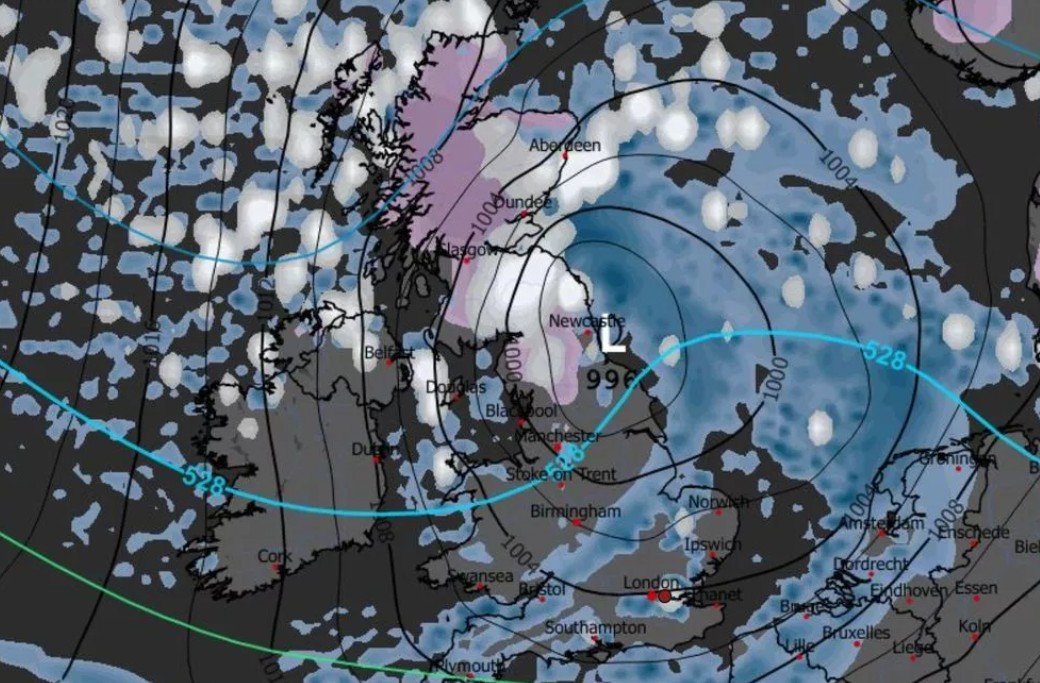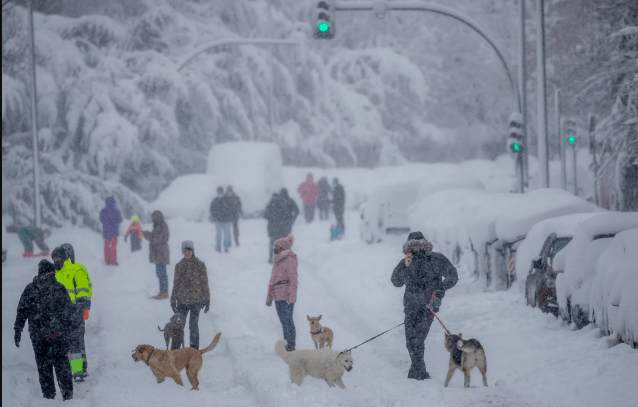Britain is on high alert as a massive wall of snow stretching further than 420 long hauls is set to reach across the country, bringing freezing temperatures, icy winds, and significant travel disruption.
Weather experts are advising the public to prepare for one of the most dramatic downtime rainfall vaticinations so far this season, with some areas anticipated to see the mercury drop to-7 °C.
According to the latest UK rainfall forecast, streamlined maps from WXCharts (powered by MetDesk) show that an important snow system is moving in from the north.
It’s anticipated to leave several elevations of snow across Scotland, northern England, and indeed the corridor of the Midlands and London by around November 20.
Major metropolises, including Glasgow, Aberdeen, Edinburgh, Newcastle, Blackpool, Manchester, and Belfast, are among those bracing for over eight inches of snow.
Meanwhile, Scotland looks set to witness the coldest conditions, with temperatures staying well below zero through important of the week.
Further south, conditions will be slightly milder. Northern England and Northern Ireland are expected to see temperatures between 4°C and 8°C, while southern England and London could reach highs of 12°C to 13°C.
A Cold Blast From the North
According to the Met Office, while the exact timing and depth of snowfall remain uncertain, an important blend of cold Arctic air and humidity-laden fronts could bring wide snow showers and nipping rain to much of the UK.
Foretellers suggest the first impact will be felt in Scotland and northern England, particularly across the mounds, Aberdeenshire, the Pennines, Cumbria, and North Yorkshire, regions well known for their wintry axes.

As the cold front pushes further south, indeed, areas less habituated to heavy snow could see many flakes.
“There’s a growing risk of snowfall across central and southern regions, especially where cold air meets incoming Atlantic moisture,” one Met Office expert noted.
Travel Disruption and Safety Warnings
With temperatures dropping well below freezing overnight, foretellers advise that trip dislocation is likely. Roads, rail lines, and airfields could face delays or closures, particularly in regions where snow accumulates quickly.
Motorists are being prompted to check conditions before setting off, keep exigency accoutrements in their vehicles, and allow redundant time for peregrinations.
Residents are also being encouraged to prepare their homes for cold weather, checking heating systems, clearing paths, and ensuring elderly or vulnerable neighbours have what they need.
What Causes Heavy Snowfall in the UK?
The Met Office explains that snow formation depends on three crucial constituents: very cold air at the surface, moist air millions, and a nipping position close to the ground.
When these conditions align, and a wettish front from the Atlantic Ocean or North Sea collides with icy air, a long belt of snow can form, stretching hundreds of miles across the UK.
This upcoming system fits that exact pattern, creating what’s being described as a “snow wall” capable of blanketing large parts of Britain.
While the long-range UK rainfall outlook remains uncertain, experts agree that conditions are turning significantly colder.
There’s a raised chance of northerly winds, wintry showers, and late frost through late November.
For now, all signs point to a wintry spell that could make November feel more like January. So, whether you’re in Scotland, the North West, or down south in London, it’s time to wrap up warm, keep an eye on the latest rainfall updates, and prepare for what could be the UK’s first major snow event of the year.






